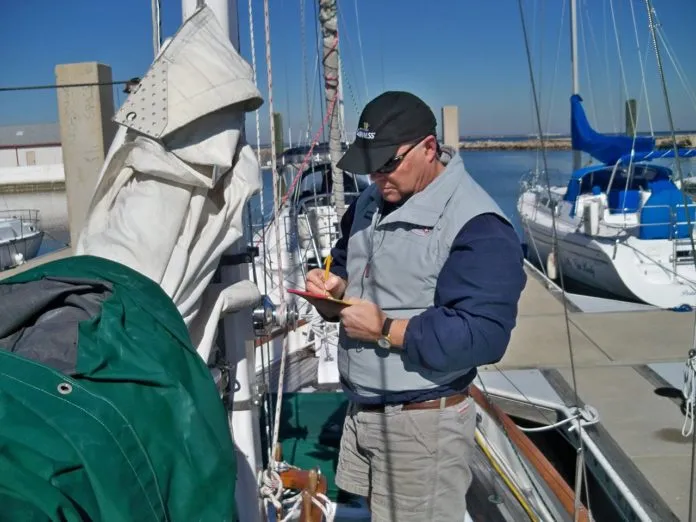Sailmakers around the world have been printing up new business cards even though they continue to work for the same franchised lofts. Their new cards have swapped job description titles from “sailmaker” to “sail designer,” a result that’s partly due to the proven value of computer-aided design and partly due to a growing trend toward sending sailmaking overseas. Like so many other industries, sailmakers have responded to the lure of lower labor rates and the growth in high-tech manufacturing skills in Asia. Many of the big-name lofts have curtailed much of their domestic sail production and instead focus on building each customer a virtual sail in their local loft, digitizing carefully made measurements, and electronically forwarding the data to a mega loft on the other side of the globe.
Sailmaking success continues to be measured in units of satisfied customers, and despite the remote location of the loft floor, this globalized approach seems to present a viable model, both from the perspective of the consumer and the business. It’s true that not as much dialogue can take place between the loft salesman, sailmaker, and skipper – a kind of collaboration that in the past led to some important decision making and genuine brand allegiance. But a capable sail designer can still deliver the goods. To do so, he must address three critical points: capture accurate initial measurements, use sophisticated design software to customize sails for the specific boat, and match the design work with the sailing preference and crew skill level.
Fortunately for those who savor the working relationship that they have had in the past with the favorite salesman/sailmaker, there are still smaller independent lofts where sewing machines continue to whir away and where the sailmaker who built your sails is still willing to join you for a sea trial. Such lofts are like independent hardware stores – an endangered species, something we’ll all certainly miss when the full effect of centralized sailmaking take hold. Some of the independents will survive on the repair work that the sailing season generates, but many see the handwriting on the wall and are turning production over to wholesalers such as China Sails Factory in Guang Dong Province, Southern China.
For more advice and recommendations on sails – what to buy, carry and use – purchase Practical Sailor’s ebook Sail Buying, Sail Making, & Mainsails.
Also, check out the complete 3 volume series, A Look at Sails at a price that’s like getting one ebook free when you buy the other two.


































